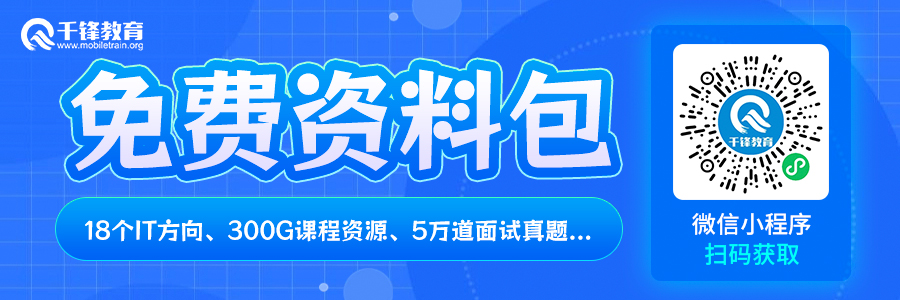如何使用Golang构建高可扩展的Web应用

如何使用Golang构建高可扩展的Web应用

Golang是一种快速、强大、易于编写的编程语言,因此在Web开发中应用广泛。在这篇文章中,我们将介绍如何使用Golang构建高可扩展的Web应用程序。
1. 构建RESTful API
RESTful API是Web应用程序的核心。使用Golang,可以使用“gorilla/mux”包轻松构建RESTful API。该包提供了路由和HTTP处理程序,使您能够轻松构建API端点。
以下是一个简单的示例:
package mainimport ( "encoding/json" "log" "net/http" "github.com/gorilla/mux")func main() { r := mux.NewRouter() r.HandleFunc("/products", GetProducts).Methods("GET") r.HandleFunc("/products/{id}", GetProduct).Methods("GET") r.HandleFunc("/products", CreateProduct).Methods("POST") r.HandleFunc("/products/{id}", UpdateProduct).Methods("PUT") r.HandleFunc("/products/{id}", DeleteProduct).Methods("DELETE") log.Fatal(http.ListenAndServe(":8000", r))}func GetProducts(w http.ResponseWriter, r *http.Request) { products := Product{ {ID: "1", Name: "Product 1", Price: 100}, {ID: "2", Name: "Product 2", Price: 200}, } w.Header().Set("Content-Type", "application/json") json.NewEncoder(w).Encode(products)}func GetProduct(w http.ResponseWriter, r *http.Request) { params := mux.Vars(r) product := Product{ID: params, Name: "Product 1", Price: 100} w.Header().Set("Content-Type", "application/json") json.NewEncoder(w).Encode(product)}func CreateProduct(w http.ResponseWriter, r *http.Request) { var product Product _ = json.NewDecoder(r.Body).Decode(&product) product.ID = "3" w.Header().Set("Content-Type", "application/json") json.NewEncoder(w).Encode(product)}func UpdateProduct(w http.ResponseWriter, r *http.Request) { params := mux.Vars(r) product := Product{ID: params, Name: "Product 1", Price: 100} w.Header().Set("Content-Type", "application/json") json.NewEncoder(w).Encode(product)}func DeleteProduct(w http.ResponseWriter, r *http.Request) { params := mux.Vars(r) w.WriteHeader(http.StatusOK) w.Write(byte(fmt.Sprintf("Product %s deleted", params)))}type Product struct { ID string json:"id,omitempty" Name string json:"name,omitempty" Price float64 json:"price,omitempty"}2. 使用连接池管理数据库连接
管理数据库连接是Web应用程序的先决条件。Golang已经内置了“database/sql”和“database/sql/driver”包,可以轻松管理数据库连接。有一些常见的数据库连接池如“sqlx”和“gorm”,可以用来进一步简化连接管理和操作。
下面是一个“sqlx”的例子:
package mainimport ( "database/sql" "log" "net/http" _ "github.com/go-sql-driver/mysql" "github.com/jmoiron/sqlx")type Product struct { ID int db:"id" Name string db:"name" Price int db:"price"}func main() { db, err := sqlx.Open("mysql", "user:password@tcp(localhost:3306)/products") if err != nil { log.Fatalln(err) } defer db.Close() err = db.Ping() if err != nil { log.Fatalln(err) } http.HandleFunc("/products", func(w http.ResponseWriter, r *http.Request) { var products Product err := db.Select(&products, "SELECT * FROM products") if err != nil { log.Println(err) http.Error(w, "Internal server error", http.StatusInternalServerError) return } for _, p := range products { w.Write(byte(p.Name)) w.Write(byte("\n")) } }) log.Fatal(http.ListenAndServe(":8000", nil))}3. 使用缓存优化性能
对于高流量的Web应用程序,缓存是提高性能的关键。Golang内置了一个简单而有效的缓存解决方案,即“sync.Map”,可以用来缓存数据库查询结果。
以下是一个简单的缓存实现:
package mainimport ( "log" "net/http" "sync" "time" "github.com/jmoiron/sqlx" _ "github.com/go-sql-driver/mysql")type Product struct { ID int db:"id" Name string db:"name" Price int db:"price"}type Cache struct { sync.Map}func (c *Cache) Get(key string) interface{} { val, ok := c.Load(key) if ok { return val } else { return nil }}func (c *Cache) Set(key string, val interface{}) { c.Store(key, val)}var cache = &Cache{}func main() { db, err := sqlx.Open("mysql", "user:password@tcp(localhost:3306)/products") if err != nil { log.Fatalln(err) } defer db.Close() err = db.Ping() if err != nil { log.Fatalln(err) } http.HandleFunc("/products", func(w http.ResponseWriter, r *http.Request) { var products Product cacheKey := "products" cachedValue := cache.Get(cacheKey) if cachedValue != nil { products = cachedValue.(Product) } else { err := db.Select(&products, "SELECT * FROM products") if err != nil { log.Println(err) http.Error(w, "Internal server error", http.StatusInternalServerError) return } cache.Set(cacheKey, products) } for _, p := range products { w.Write(byte(p.Name)) w.Write(byte("\n")) } }) go func() { for { <-time.After(time.Minute * 5) log.Println("Clearing cache") cache = &Cache{} } }() log.Fatal(http.ListenAndServe(":8000", nil))}4. 使用消息队列处理异步任务
异步任务处理是Web应用程序的重要组成部分。使用消息队列可以将耗时的异步任务移动到后台,以便Web应用程序可以更快地响应请求。
Golang中有很多流行的消息队列实现,如RabbitMQ、Kafka和NSQ。以下是一个使用NSQ的示例:
package mainimport ( "log" "net/http" "time" "github.com/nsqio/go-nsq")type Task struct { ID int Title string}func main() { config := nsq.NewConfig() producer, err := nsq.NewProducer("localhost:4150", config) if err != nil { log.Fatalln(err) } defer producer.Stop() consumer, err := nsq.NewConsumer("mytopic", "mychannel", config) if err != nil { log.Fatalln(err) } defer consumer.Stop() consumer.AddHandler(nsq.HandlerFunc(func(message *nsq.Message) error { log.Printf("Got message: %s\n", string(message.Body)) return nil })) err = consumer.ConnectToNSQD("localhost:4150") if err != nil { log.Fatalln(err) } http.HandleFunc("/tasks", func(w http.ResponseWriter, r *http.Request) { task := Task{ID: 1, Title: "Task 1"} // Send task to NSQ err := producer.Publish("mytopic", byte("Hello World!")) if err != nil { http.Error(w, "Internal server error", http.StatusInternalServerError) return } w.WriteHeader(http.StatusOK) w.Write(byte("Task created")) }) log.Fatal(http.ListenAndServe(":8000", nil))}总结
在本文中,我们介绍了如何使用Golang构建高可扩展的Web应用程序。我们看到了如何使用“gorilla/mux”包构建RESTful API,如何使用连接池管理数据库连接,如何使用缓存和消息队列优化性能。使用这些技术,您可以构建可扩展和高性能的Web应用程序,同时仍然保持代码的简洁和易于维护。
以上就是IT培训机构千锋教育提供的相关内容,如果您有web前端培训,鸿蒙开发培训,python培训,linux培训,java培训,UI设计培训等需求,欢迎随时联系千锋教育。










